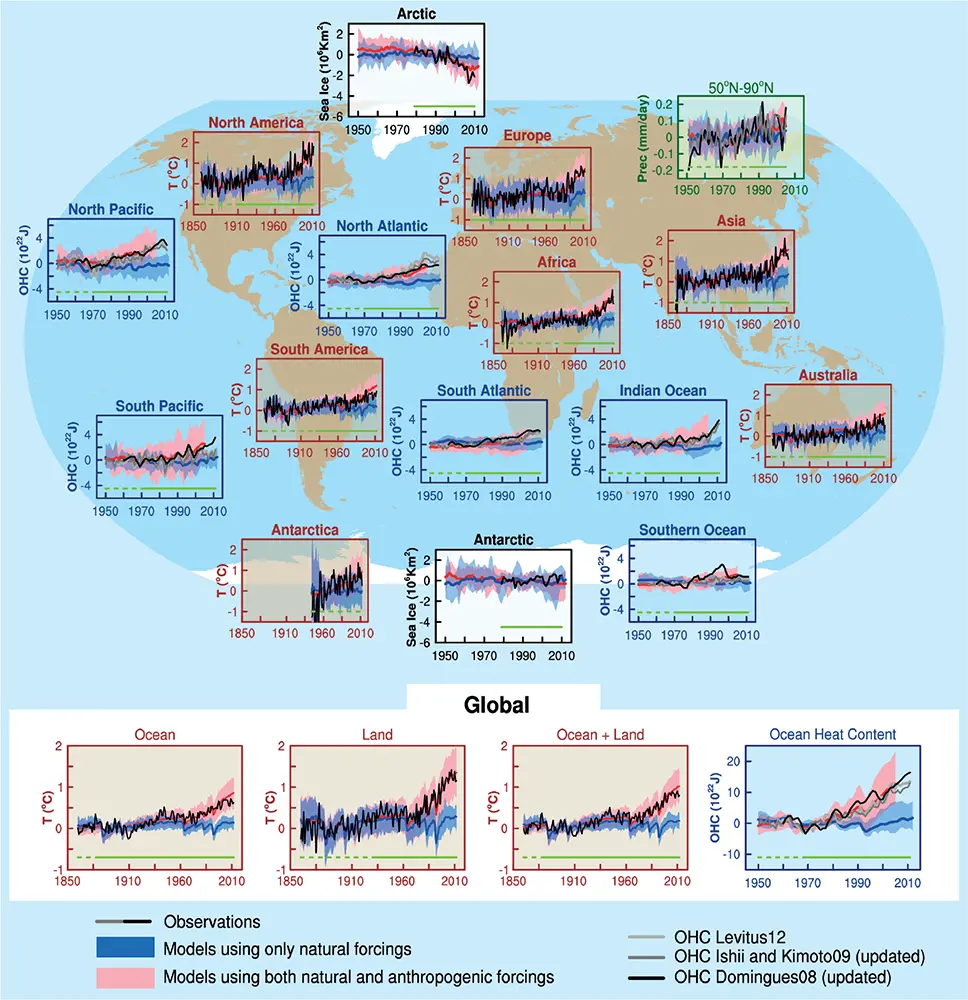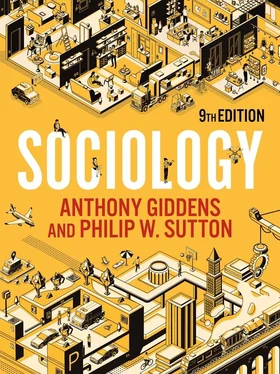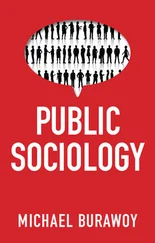2 In Central, East, South and South-East Asia, availability of freshwater is forecast to be reduced by 2050, leading to increasing problems with water security. Coastal areas are likely to be subject to flooding from rivers and from the sea. As global warming changes the hydrological cycle, floods and drought will be more common.
3 In Latin America, eastern Amazonia is likely to see tropical forests becoming savannah as soils dry out, and semi-arid vegetation will be lost. Food security will be reduced as the productivity of crops and livestock declines and more people will be at risk of undernourishment and chronic hunger. Shifting rainfall patterns will lead to uncertain water supplies for drinking water and agriculture.
4 In Australia and New Zealand, the forecast is for a loss of biodiversity in important sites, including the Great Barrier Reef. Water insecurity will increase in southern and eastern Australia and parts of New Zealand. Agricultural production will decline in much of southern and eastern Australia and eastern New Zealand because of increasing droughts and fires.
5 In Europe, more frequent coastal flooding and erosion are expected as a result of sea level rise and more severe storms. Southern Europe will see more drought and higher temperatures that will reduce the availability of water and crop productivity. Higher temperatures will worsen health problems arising from more frequent heatwaves.
6 North America will experience more intense and frequent heatwaves in cities that already have problems, bringing increasing health problems. Warming in the western mountains is likely to cause more flooding in winter and reduced flows in the summer months.
7 Rising sea levels are likely to present major challenges for many small island communities in the Pacific and Caribbean. Storm surges will be higher and erosion exacerbated, threatening communities and infrastructure. By the mid-twenty-first century, water resources are likely to be reduced to the point that they will not be sufficient to meet demand during times of low rainfall.

Figure 5.1 Global and regional temperature changes: observed, natural forcing, and natural plus anthropogenic forcing
Note : All time-series are decadal averages plotted at the centre of the decade.
Source : IPCC (2015: 49).
The IPCC’s 2018 Special Report compared the impact of global warming of 1.5°C with that of 2°C above pre-industrial levels, noting that human activity has already produced warming of between 0.8°C and 1.2°C, i.e., approximately 1°C. On present trends, at 0.2°C per decade, based on previous and current emissions, 1.5°C of warming will be reached sometime between 2030 and 2052 (IPCC 2019: 6). Even if all emissions stopped immediately, warming would continue on account of past greenhouse gas emissions, but this would not reach the 1.5°C threshold.
As in the Fifth Assessment (2015), the IPCC argued that the most damaging effects of global warming could be averted if the temperature rise can be kept as close to 1.5°C as possible. All of the potentially deleterious effects of rising temperatures listed above would be worse and more difficult to reverse if 2°C is reached. To prevent that happening would require a much more systematic, wide-ranging global programme to reduce emissions alongside adaptive measures. In particular, global net emissions of CO 2would have to be reduced to ‘near zero’ by 2050. The report acknowledges that achieving this goal will require ‘rapid and far-reaching transitions in energy, land, urban and infrastructure (including transport and buildings) and industrial systems’ that are ‘unprecedented in terms of scale, but not necessarily in terms of speed’ (IPCC 2019: 17).
Net zero has become the slogan of XR and other environmental groups as they try to push governments to go faster in reducing carbon emissions, and much progress has been made in numerous countries to shift to renewable forms of energy and to move away from fossil-fuel-based transport systems. Yet, despite this, the scale of the task ahead is highlighted by reports that, after levelling off between 2014 and 2016, global CO 2emissions began to rise again, by 1.6 per cent in 2017 and 2.7 per cent in 2018, ending the year at an all-time high. These rises have been attributed to oil and gas use continuing in many countries, the increasing use of coal in China (by 4.5 per cent) and India (by 7.1 per cent) (countries with very large populations), and US emissions rising by around 2.5 per cent (Figueres et al. 2018). What we can see from this brief sketch is that, without concerted global action involving all of the major polluting nations, global net zero CO 2by 2050 will not be achieved.
The negative impact of global warming will be distributed unevenly, with already disadvantaged people and communities around the world bearing the brunt of environmental change. As we will see later, this is one reason why campaigners argue for ‘sustainable development’, which foregrounds tackling global inequality as the key to reducing emissions.
Since its creation in 1988, the IPCC has made it increasingly clear that global warming is largely the result of anthropogenic causes such as industrial pollution, vehicle emissions, deforestation and the burning of fossil fuels, all of which release greenhouse gases into the atmosphere. Although the evidence base is large, diverse and consistent, there are still contentious debates around the thesis and its implications which bring the consensus view into conflict with a small number of ‘climate change sceptics’.
The IPCC (2015: 2) says that ‘Warming of the climate is unequivocal, and since the 1950s, many of the observed changes are unprecedented over decades to millennia.’ Yet some question the evidence that global warming is actually occurring at all. Lord (Nigel) Lawson (2009: 1), former energy secretary and chancellor in the UK government, maintains that global warming is ‘the latest scare’ in a series that includes overpopulation and total resource depletion. Lawson argues that there was a ‘mild warming’ in the last quarter of the twentieth century, but this has been followed by a ‘lull’ in the twenty-first century when warming has apparently ‘stopped’. The sceptical charge here is that climate scientists fail to deal adequately with contrary evidence and either ignore it or cherry-pick their evidence. Yet in 2011, the government’s chief scientific adviser, Sir John Beddington, engaged in an exchange of letters with Lawson, arguing that his book showed little grasp of climate science, that short-term temperature trends are not meaningful in the context of long-term global warming, and that the scientific evidence from multiple sources clearly showed that ‘the risks are real’ (Boffey 2011).
Second, some sceptics argue there is good evidence that global warming is real but deny an anthropogenic cause. For this strand, global warming is an entirely natural phenomenon, probably related to the fluctuating activity of the sun. They also claim that CO 2is not a significant greenhouse gas. As solar activity fluctuates, so does the Earth’s climate, and this explains the current warming trend. The majority scientific view is that solar activity does affect surface temperature, but there is no evidence of a positive trend in solar activity since the 1960s that could have produced the present global warming. CO 2is certainly not the only greenhouse gas, but it does remain in the atmosphere for many decades and even centuries, which leads to a steady accumulation over time from industrial activity. It is this, say the majority, which mainly accounts for global warming.
Читать дальше













